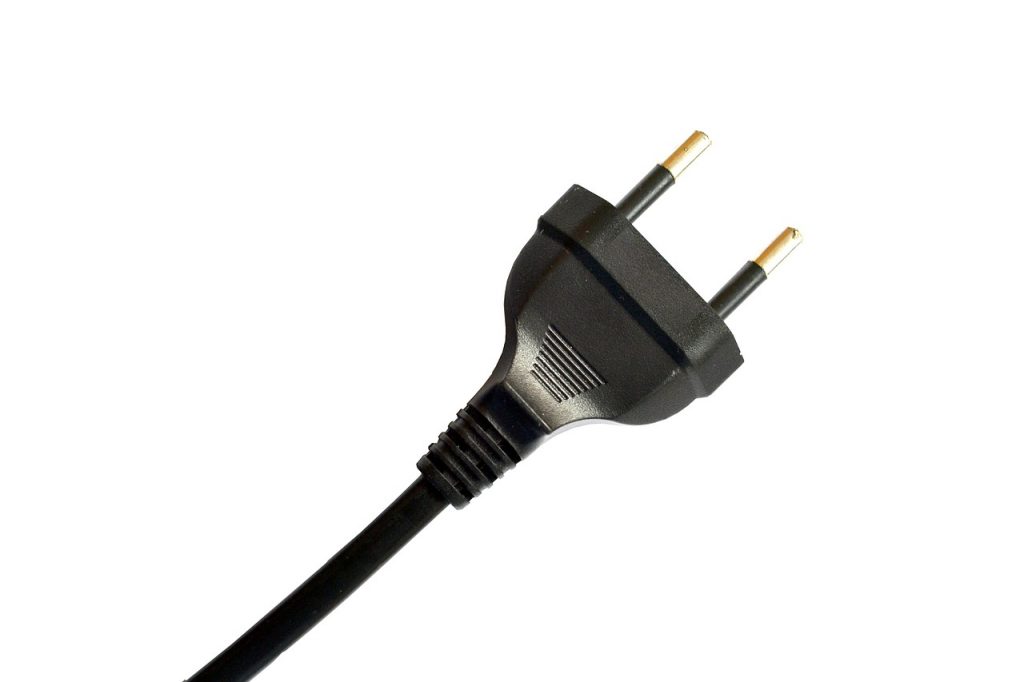The given name is an electrical plug. However, these are commonly known as power plugs. They are responsible for supplying current from a receptacle to an electrical object, whether it be an appliance, your phone, or a computer.
These electrical plugs often have prongs or a pin that is surrounded by a casing. These prongs are then inserted into the holes in the outlet to generate an electrical connection.
An electrical plug can be found in a residence. Or they can be found in industries or commercial spaces around the world.
Each type of country has its own type of electrical plug. Here we will examine the differences:
Two-pronged power plugs
These two-pronged plugs can have just one prong or a pin in them. Each is then connected to the slots in the receptacle. The two prongs then receive the current from the receptacle and then power into the object.
These two-pronged outlets have two wires in them, according to WM Henderson Heating and Cooling. One wire is a neutral wire, while the other is a hot wire.
These two-pronged outlets can be found in older houses. Since these do not have a grounding wire, they can be dangerous. These are not requested for modern houses.

Three-pronged power plugs
Another type of electrical plug is a three-pronged plug. These are the more common plugs, as they have a grounding pin. They are the standard for houses today.
With this type of power plug, a pin is connected to the grounding wire, which is usually positioned under a hot and neutral pin. These plugs are usually used for electrical appliances requiring a higher power source. These can include toasters, HVAC equipment, industrial machinery, or other electronics.
Other power plugs
Outside of two-prong and three-prong power plugs, there are 15 types of electrical plugs, according to the International Electrotechnical Commission (IEC). These plugs have a letter designation type and are considered standard.
For example, one of these other plugs is a NEMA plug. It is also known as Type A or B. These types of plugs are used for connecting electronic devices to power outlets. They can carry an AC or DC current.
An alternating current is found in homes, offices, stores, or businesses. However, a direct current is the electricity that comes from a battery.
Main differences and similarities between all power plug types
To help you better understand the characteristics different power plugs share and how they differ, here are the main similarities and differences:
Similarities
- Purpose: All these plugs serve the same basic function: to connect an electrical device to the power supply.
- Components: They all have prongs or pins that transmit electrical power from the outlet to the device.
- Geographical Specificity: They are all designed to comply with specific country or regional standards for electrical systems.
Differences
- Number of Prongs: Two-pronged plugs have two pins; three-pronged and other plugs can have two, three, or even more pins.
- Safety Features: Three-pronged plugs and some other plug types incorporate a grounding pin for safety, while two-pronged plugs do not.
- Polarisation: Three-pronged plugs are often polarised, meaning they can only be inserted one way into the socket, whereas many two-pronged plugs are not.
- Power Capacity: Three-pronged plugs and some other plug types are often used for higher-powered devices, while two-pronged plugs are typically used for low-power devices.
- Shape of Pins: Two-pronged plugs (Type A) typically have flat pins, while three-pronged plugs (Type B) have two flat pins and one round pin. Other plugs can have different shapes and arrangements, like the round pins of Type C or the rectangular pins of Type G.
- Geographical Usage: Each plug type is associated with specific countries or regions. For example, two-pronged plugs are commonly used in the United States, Canada, and Japan, while three-pronged plugs are standard in the United States, Canada, Mexico, and Japan. Other plug types are used in various regions, like Type C in Europe, Type G in the UK and Singapore, and Type I in Australia and New Zealand.
In conclusion, the major differences between two-pronged, three-pronged, and other plugs revolve around their design (the shape and number of prongs), safety features (grounding or polarisation), and geographical usage. When travelling internationally, it’s essential to have a good understanding of these different plug types or to carry a universal adapter to ensure your devices can be safely and correctly powered.
For even more features like this, click right here.